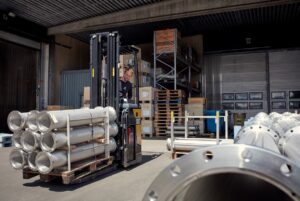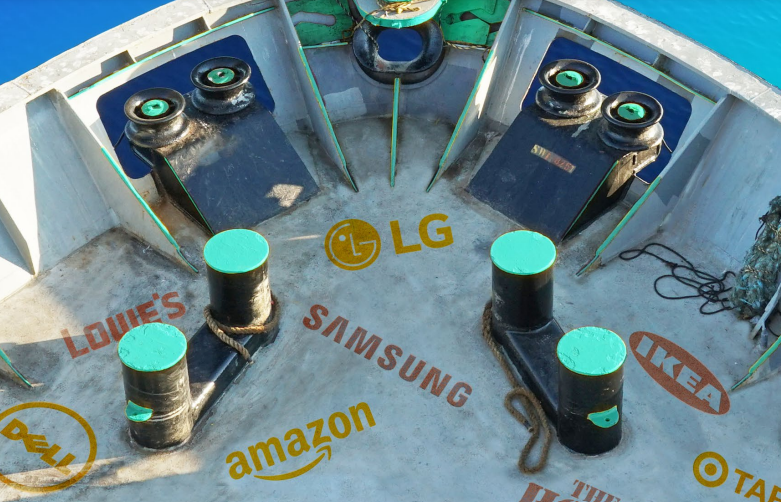A new study aims to drive some of the biggest brands in the US to demand clean ship technologies from their maritime partners.
IMO’s greenhouse gas negotiations are always preceded by intense pressure from non-governmental organisations, but usually on IMO member states. This time around, one lobby group is instead aiming to put shippers under pressure to abandon ‘dirty ships’, and ports not to accept them. A new report by Pacific Environment and Stand Earth, ‘All Brands on Deck’, highlights the climate and environmental damage that some of the biggest consumer brands in the US are doing through their transport choices.
The publication is lent credibility through validation by UMAS, co-authors of the IMO Greenhouse Gas (GHG) Study. By combining datasets on imports, linked voyages and emissions (as calculated using the mathematical model deployed in IMO’s own GHG study), the report attributes 3.5 million tonnes of emissions to the US imports of 18 retail, furniture, technology and fashion companies. Among those brands are Amazon, Walmart, Target, Home Depot and Nike.
“We are calling on the industries, and major corporate leaders within them, to end port pollution, abandon dirty ships and put 100% zero-emission ocean shipping at the helm this decade, no later than 2030.”
It’s a canny strategy. The Sea Cargo Carter and Poseidon Principles, as well as zero-emission pledges from charterers and shippers, are already showing that pressure from customers and financers is a far more immediate driver of change than regulation – particularly multinational regulation that takes account of industry interests and relies on wrangling consensus.
Another timely element is the focus on Scope 3 emissions, those not produced directly by companies but within their value chain, which are the latest battleground of climate change. A recent action in the UK, where Client Earth sued Shell directors for failing to protect the business on the basis of a third-party assessment of its Scope 3 strategy, is a case in point.
Focusing on the US is also in the authors’ favour. The country, and particularly the progressive state authorities of California – including the California Air Resources Board (CARB) – have already introduced among the strictest maritime emissions of any jurisdiction. CARB’s Ocean-Going Vessels At Berth Regulation is being extended to container, reefer and cruise vessels this year, requiring them to use shore power or an approved alternative technology to reduce emissions.
Pressurised states
Vocal pressure from public and shippers could drive regulators from other states, or even federal authorities, to consider similar rules. “California is the only US state with mandatory low- or zero-emission standards for ships at berth or in-transit,” the authors write. “Port Authorities in Houston, Newark and Savannah should work with their major retail import partners to accelerate zero-emission shipping and bring overdue health relief to port-adjacent communities.”
Finally, the report’s demand for zero-emission shipping by 2030 ties in with wider industry initiatives striving for the same target, notably the Getting to Zero Coalition and the US-Norway driven Green Shipping Challenge. Aiming to drive shippers to alignment with those goals will add commercial support to those ambitions.
Of course the 2030 demand could also be where the strategy falls down. Responsible for around 4.25 million TEU of imports to the US alone in 2021, it is questionable whether – even with 50 zero-emission capable container ships planned to enter service by 2025 – there will be zero-emission capacity. And there are even more uncertainties over whether those vessels will be operated to their clean capabilities, given scarce renewable fuel supply.
But that is hardly the point. The greater the commercial onus, the more likely it is that shipping will accelerate its climate action. Pacific Environment’s piece has authority, a clear focus and thematic touchpoints that will resonate with many stakeholders. Anticipating slow progress on regulation, the commercial pressure it aims to apply may be the easiest way for shipping to justify its transition.
Related stories


ABS, ECOLOG, Hanwha Ocean and Babcock sign pioneering LCO2 carrier study

Svanehøj secures CO2 pump order for the third Northern Lights LCO2 carrier


NOM and Horizon Flevoland to invest in Econowind’s WASP technology

































